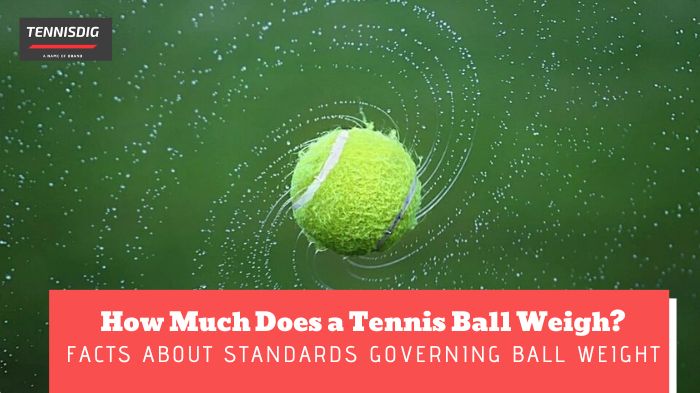At the intersection of precision and performance in tennis, weight is an influencing factor that can shape game play dynamics. While these fuzzy yellow orbs may appear deceptively simple, their engineering plays an essential part in guaranteeing fair play and consistent performance. Here we explore this topic further – specifically regarding standards governing ball weight as well as what impact this seemingly simple characteristic can have on its sport of origin.
Regulation Standards for the weight of tennis ball
According to ITF, the regulation standards for the weight of tennis ball is:
2.5 ounces or 70 grams to 2.625 ounces or 74 grams)
Composition and Construction:
Tennis balls are composed of a rubber core encased by felt covering, providing significant weight to the ball while being pressurized to retain form and responsiveness during play. Meanwhile, yellow colored felt provides texture for grip as well as aerodynamic benefits to help make up their aerodynamic makeup.
Weight’s Impact on Performance:
Weight has an immediate and direct influence on a tennis ball’s performance characteristics, particularly its bounce and speed. Heavier balls tend to produce more predictable bounce, making it easier for players to anticipate and respond to shots more accurately – this characteristic is particularly significant in professional tennis where split-second reactions may make the difference between winning or losing shots.
On the flipside, lighter tennis balls tend to travel faster through the air and present different challenges for players due to reduced air resistance allowing swifter serves and groundstrokes. Finding an optimal combination between weight and speed requires careful consideration based on each individual player’s playing style and court conditions.
Surface Impact:
A tennis ball’s weight interacts with its playing surface in various ways, such as affecting bounce height and speed. For example, on clay courts that tend to slow the ball down quickly, players may benefit from using a slightly heavier ball that retains energy and bounces consistently; on faster surfaces like grass or hard courts where speed and responsiveness is more essential, using something lighter could give an advantage in terms of responsiveness.
Altitude and Climate Factors to Take Into Consideration:
Altitude and climate can have a dramatic effect on tennis ball performance, with weight playing an essential part in these environmental considerations. At higher altitudes where there is less air resistance, tennis balls tend to fly faster due to reduced air resistance; players in such conditions may require a slightly heavier ball for maximum control over their shots; conversely in humid or damp climates where water absorption may lead to heavier balls, players might opt for lighter ones for optimal performance.
Technological Innovations:
Advancements in tennis ball technology continue to advance, with manufacturers exploring materials, construction methods and design modifications that improve performance. From pressureless balls created for durability to high altitude balls tailored specifically for certain playing conditions – weight remains at the forefront of innovation for tennis ball makers.
Conclusion
Although seemingly minor in nature, tennis ball weight plays a vital role in its dynamics. From precise standards set by the ITF to individual player preferences, ball weight can have a dramatic impact on bounce, speed and overall playability. As players engage in vigorous rallies or serve powerful serves, each weighted tennis ball plays its part as part of an intricate dance of skill, strategy and athleticism that defines tennis play.

